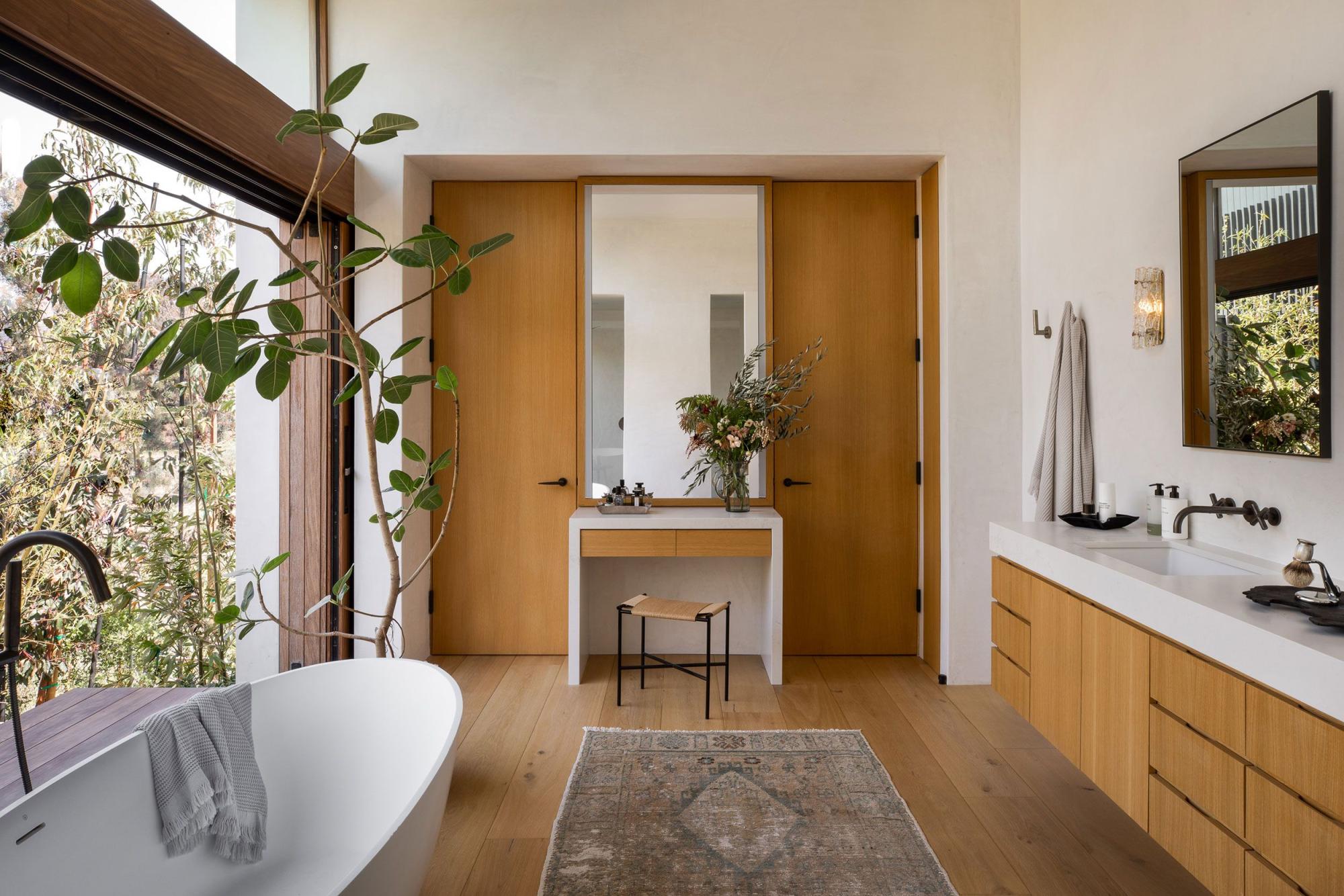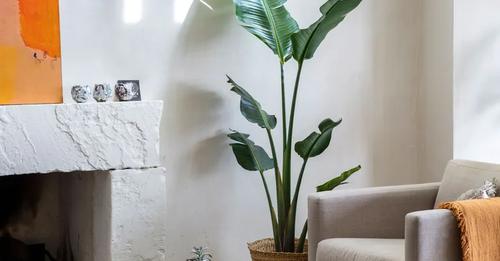Decorating your home with black paint, furniture, or accessories can feel intimidating, but the dark color is surprisingly versatile. It can be styled in a way that looks modern and stark, or it can be used to add warmth to a room and create a cozy, lived-in feel. “Black as a color is inherently grounding, and creates focus within a space,” says Ashley Macuga of Collected Interiors. “I love the way it draws the eye instantly to an object or part of a room. It’s deeply sophisticated and yet simple.”
If you’re on the fence about decorating with black, start small. Incorporate tabletop accessories or add a few pieces of black furniture to your space for a pop of dark color. If you’re ready to fully commit, paint a black accent wall or black kitchen cabinets. To help inspire your next moody makeover, designers dish their favorite ways to incorporate black home decor into your space.
Paint a Black Accent Wall
:strip_icc():format(webp)/accent-a23fe5490ea043f89b5b6ad7286fe48f.jpeg)
Worried that all-black walls will make your space feel dark and cramped? Start with an accent wall. “Using black paint as an accent wall or on millwork keeps things restrained,” says Amy Forshew of Proximity Interiors. “If you are layering in lots of color and fabrics, it does make a great backdrop,” Black is a true neutral just like white or gray, so don’t be afraid to mix in some color and texture.
Some of Forshew’s favorite black paint colors include Sherwin-Williams’ Tricorn Black, which she calls a “simple, straightforward” hue, and Farrow & Ball’s Pitch Black 256, which has “a lot of depth and warm tones and is a little more moody.”
Choose the Right Undertone
:strip_icc():format(webp)/black-b262e594ee024a1bb1242267493d2786.jpeg)
Unlike other neutrals like white or tan, black isn’t an earth tone, explains Tara Dennis, cofounder and director of Archie Bolden. “Black is not a naturally occurring color—it’s man-made, so it will always look severe if it’s in a space that has natural tones or materials,” she says.
If you do want to use black in a room with browns, tans, or other earth tones, Dennis suggests going with a black paint with brown undertones. “It will be softer aesthetically and tie in better with the natural tones and materials, reducing its severity,” she says.
While the range and hood in this kitchen are a true black, the gloss sets off some of the severity and the dark kitchen cabinets have a warm undertone that looks at home next to the wood island.
Use Black Trim
:strip_icc():format(webp)/black-white-bathroom-counter-mirror-bc70dc24-4e97d25a1f8c49aab066201fb124efe2.jpg)
Ground a space with one strong black component—like the painted vanity here—then layer in smaller black accents, such as this bathroom’s shower door, black mirror, and patterned floor tile.
“If the rest of the space has lighter-toned elements, then it’s best that black accents are used as details and trims, such as edging on pillows and black frames on artwork,” Dennis says. “In this sense, it’s an accent and a shadow to the rest of the space, not a dominant feature.”
Add Contrast
:strip_icc():format(webp)/black-white-bathroom-e5dde6df-43ecfcb68c2f4ef58648f1243d59ae29.jpg)
“Black will always look good when used in the proper proportion,” says Noelle Isbell of Noelle Interiors. She explains that using contrasting colors or three-dimensional texture can balance black decor and add lightness when featuring black tile, fabrics, or rugs. For example, the texture of black wainscoting against penny tiles in this bathroom isn’t quite as heavy as a plain black wall might appear.
Paint the Ceiling Black
:strip_icc():format(webp)/glossy-c823b6e147a5453ba04c0ebd97825e00.jpeg)
If you’re unsure about black walls, go for the ceiling instead. Painting a ceiling black can feel daunting, but it’s an effective way to pull a room together. It adds an unexpected pop of color and can make the ceilings look higher than they really are, especially in a small space.
Here, a black ceiling complements black accessories, including a glossy apothecary cabinet, mirror, and hardware. The black decor pops against sparkling white walls, tying the pieces together without overwhelming the small space. “To incorporate black in a room, I recommend lacquering an old piece of furniture and trying a gallery wall of art and photos all framed in different black frames,” Forshew suggests.
Use an Unconventional Material
:strip_icc():format(webp)/marble-37538e10124a40b09663123c68e6df0c.jpeg)
A favorite way to add pops of black is to incorporate the rich color into your home’ via stone or tile surfaces. Here, a black marble backsplash paired with jet-black countertops gives the space a moody yet welcoming feel. The cream-colored veining in the stone paired with brushed gold accents keeps the monochromatic pairing from looking too harsh.
Paint Black Walls
:strip_icc():format(webp)/102493818-1a258f6e395548808d91aa9e54207145.jpg)
Don’t be hesitant to use black in a smaller space. While you might be worried it’ll be too intense for a confined area, the color actually can make a space appear more grand. “Dark colors work best for small spaces, especially those you pass through to another larger, brighter room, like a hallway or foyer,” says Bethany Adams of Bethany Adams Interiors. “It’s a common trick used in architecture and design—the ‘squeeze’ into small dark places makes the ‘release’ into larger, lighter spaces that much more awe-inspiring.”
Paint Black Built-Ins
:strip_icc():format(webp)/room-9da2ba3e2e90450789600a1194e9204c.jpeg)
Don’t shy away from making a statement. Go beyond a charcoal accent wall and paint your built-ins black. “A black wall steals all the attention in a space as it’s very bold and heavy, so the only way to decorate it is to meet its intensity,” Dennis says, adding that embracing other colors, textures, and materials will only add to the effect. Style black shelves with softer colors and textures to create a focal point without overwhelming the space. Here, brushed gold frames, artwork, and various wood and metal elements effectively break up the dark shelves.


